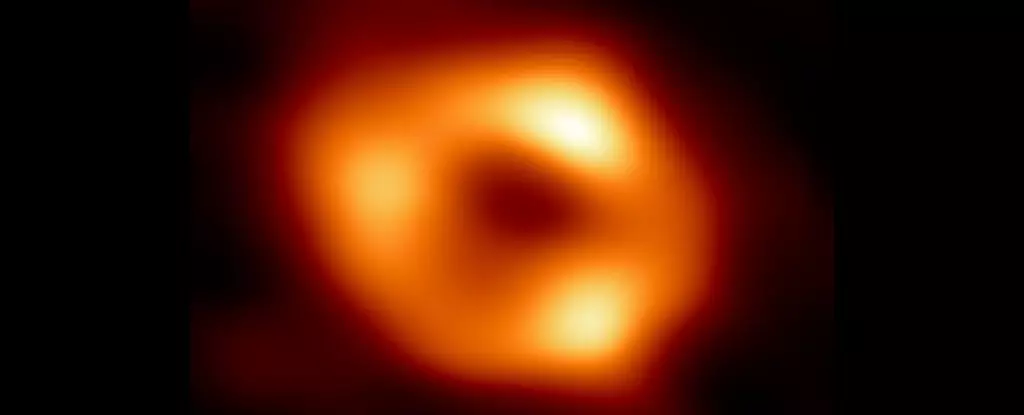The captivating image that was once hailed as the first visualization of Sagittarius A* (Sgr A*), the supermassive black hole residing at the center of our galaxy, is under scrutiny by researchers from the National Astronomical Observatory of Japan (NAOJ). While the image released by the Event Horizon Telescope (EHT) team generated significant excitement, recent analyses suggest that this representation may not fully capture the complex dynamics of the accretion disk surrounding Sgr A*. This article dives into the implications of these findings and what they reveal about our understanding of black holes.
The original image of Sgr A* showcased a bright ring that seemed to outline a dark region, suggesting a standard circular formation of the accretion disk. However, the NAOJ team’s re-evaluation of the data has revealed an elongated structure instead. This shift in perception is noteworthy; it reveals not just a change in shape but also possibly points toward fundamental differences in the motion and matter distribution within the accretion disk. The process of imaging such distant astronomical objects is notoriously convoluted, which can lead to variations based on the methods employed.
Miyoshi Mikato, a key figure in this research, highlights that the circular shape presented initially may have stemmed from artifacts introduced during imaging analysis. This assertion raises critical questions about the accuracy of astronomical imaging as a whole. If the first image was indeed influenced by measurement errors, then it underscores the need for continued exploration and validation in astrophysical studies.
Understanding the characteristics of the accretion disk is essential for comprehending the behavior of matter being pulled into the black hole. This disk consists of material that has reached extremely high temperatures due to both gravitational acceleration and magnetic forces, radiating mostly in x-rays and visible light. The peculiarities of the Sgr A* accretion disk suggest that there are several influencing factors at play, including the black hole’s angular momentum and the rate at which matter is being accreted.
Intriguingly, the NAOJ’s analysis suggests an asymmetric distribution of brightness in the disk: the eastern portion appears significantly brighter than its western counterpart. This disparity could be indicative of a Doppler effect related to the fast rotation of the disk, potentially rotating at up to 60 percent of the speed of light. Such rapid movement hints at a dynamic environment where matter behaves in ways not yet fully understood.
One critical aspect that emerges from both analyses—the original EHT representation and the subsequent NAOJ revision—is the inherent challenges of imaging in astronomy. Mikato emphasizes that no telescopic observation can perfectly capture the complexity of celestial phenomena. The EHT generated its image by combining data from a network of radio telescopes positioned globally, but this interferometric approach introduces gaps in the data. The original team creatively filled these gaps, resulting in their circular representation.
In contrast, the NAOJ team adopted a different mapping technique that allowed them to depict the accretion disk as an elongated figure. By addressing the shortcomings of the initial method, they unveiled new insights about the characteristics and structure of the disk surrounding Sgr A*. Notably, both interpretations, whether circular or elongated, could coexist under the principle that differing methodologies can yield varied interpretations of the same fundamental data.
The implications of these findings extend beyond Sgr A* alone. As the EHT consortium strives to refine its methods for capturing images of black holes, the pursuit of accurate astrophysical mapping becomes ever more critical. Improved imaging capabilities promise richer and more informative renderings of distant celestial objects, which could facilitate better comprehension of phenomena such as accretion disks and the gravitational dynamics at play.
The research led by the NAOJ may also contribute to a larger understanding of the environments surrounding black holes and the fundamental processes that dictate their behavior. As we inch closer toward elucidating these cosmic enigmas, it becomes clear that our grasp of black hole physics remains in a state of evolution, necessitating continuous inquiry and analysis.
The reevaluation of Sgr A* encapsulates the ongoing challenges and advancements in the field of astrophysics. As new techniques and collaborative projects emerge, they hold the potential to provide deeper insights into black holes and their surrounding accretion disks, ultimately shaping our understanding of the universe.

